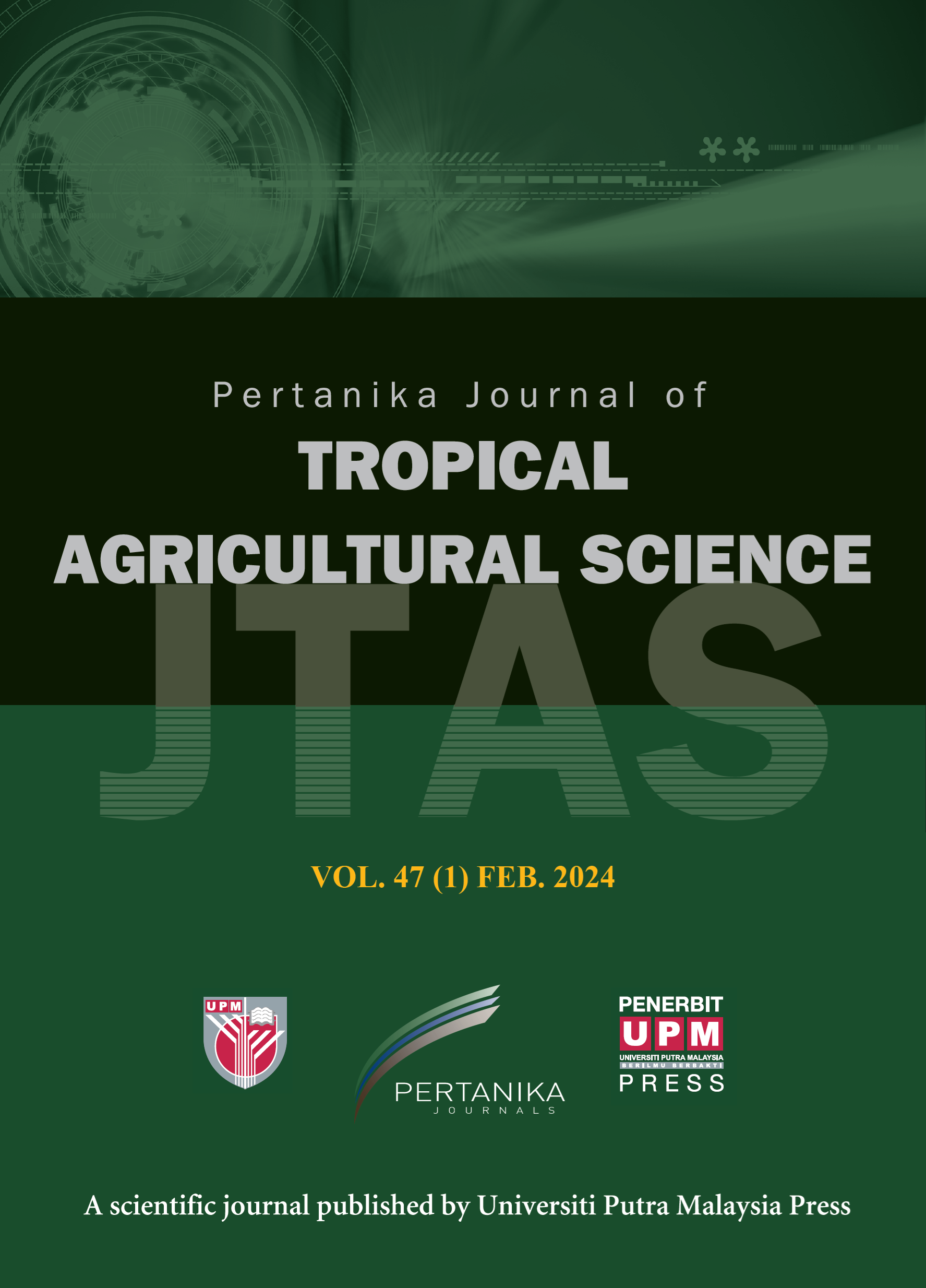PERTANIKA JOURNAL OF TROPICAL AGRICULTURAL SCIENCE
e-ISSN 2231-8542
ISSN 1511-3701
Diversity, Abundance, and Foraging Behavior of Ants (Hymenoptera: Formicidae) Scavenging on American Cockroach in Various Habitats of Nasarawa State, Nigeria
Mohammed Ahmed Ashigar and Abdul Hafiz Ab Majid
Pertanika Journal of Tropical Agricultural Science, Volume 43, Issue 4, November 2020
DOI: https://doi.org/10.47836/pjtas.43.4.07
Keywords: Abundance, diversity, Periplaneta americana, Pheidole, scavenging ants, rural, urban
Published on: 30 November 2020
Ants play a vital role in removing dead arthropods from the environment. Complex foraging patterns are used by ants to locate food items and overwhelm even larger insects such as cockroach. Consequently, the biotic interaction between the ants and the American cockroach, Periplaneta americana, another home infesting and a vector of major food-borne diseases, may lead to microbial handover and ease the spread of mechanically transmitted human pathogenic microbes. This study was done to determine the diversity and abundance of cockroach-foraging ants in Nasarawa State, Nigeria. Ten households were randomly selected from 14 locations: 5 residential communities from three most urbanized areas (Lafia, Akwanga, and Keffi) and 5 rural communities. Four remaining locations were nonresidential from Lafia and Akwanga, respectively. A total of 1,364 ants belonging to three subfamilies (Myrmicinae, Formicinae, and Ponerinae) were collected from 140 households. Pheidole rugaticeps Emery recorded the highest relative abundance (52%) followed by Pheidole decarinata Santschi (16%), Pheidole sp. (17%), Camponotus maculatus (7%), Paratrechina longicornis (7%), while both Crematogaster sp. and Brachyponera sennaarensis recorded the lowest relative abundance (1%). There is a significant difference in the species diversity between the urban and the rural communities. Pheidole rugaticeps, P. decarinata, Pheidole sp., and P. longicornis were more organized in foraging and operating in group by recruiting nest-mate for collecting fragments of dead cockroach. Studies on the epidemiology, conservation implications, and biocontrol potentials of these Pheidole species are recommended.
ISSN 1511-3701
e-ISSN 2231-8542




